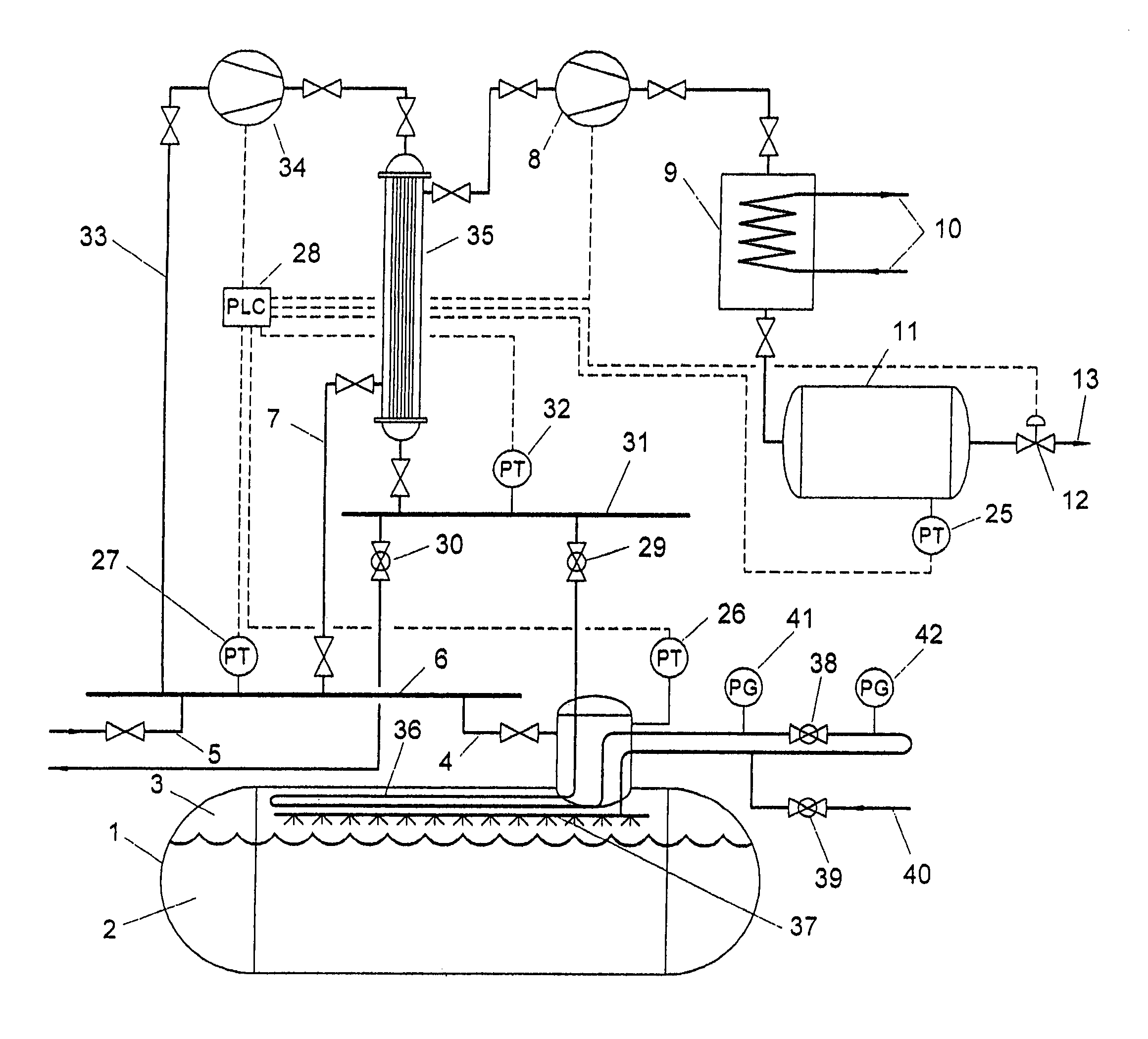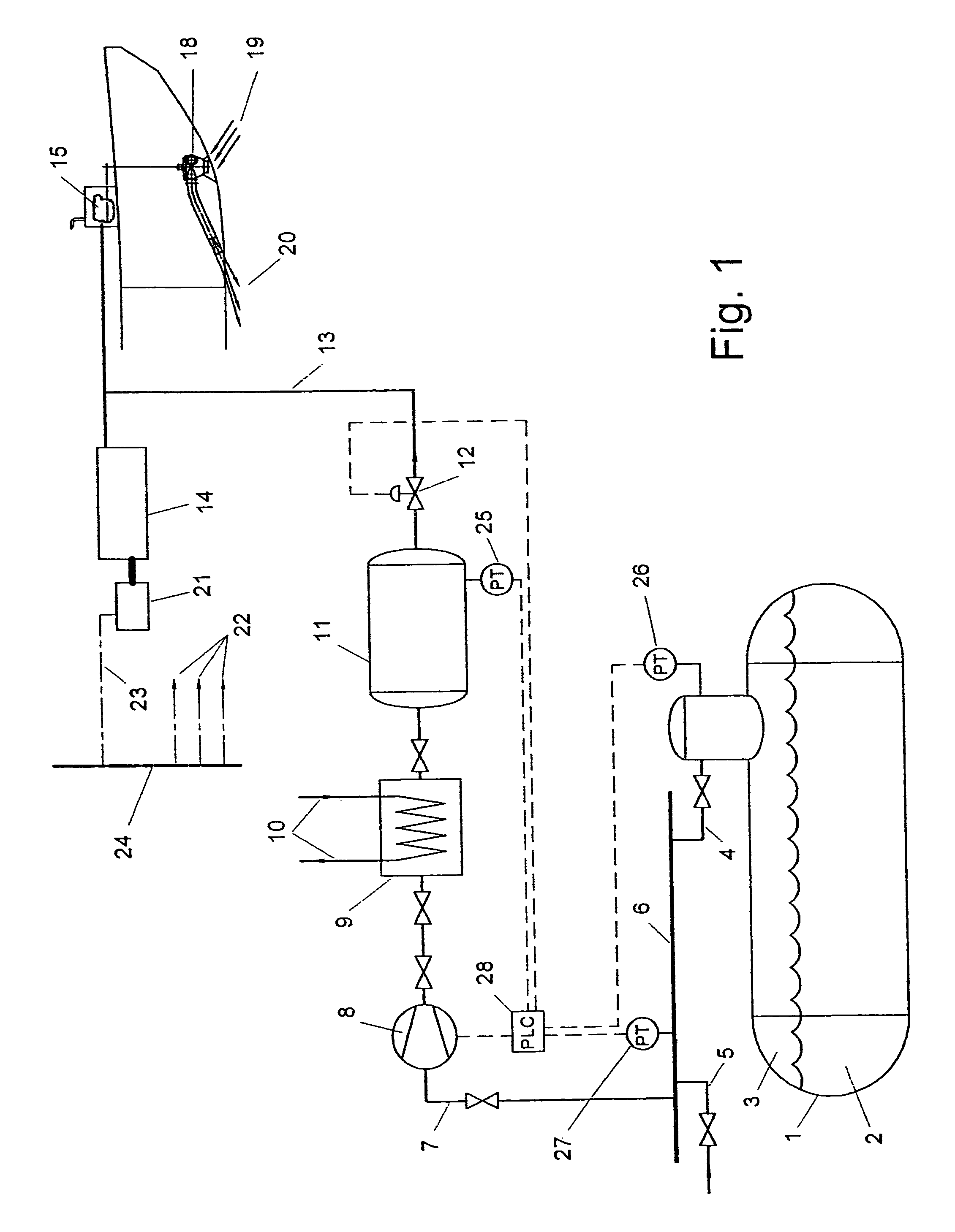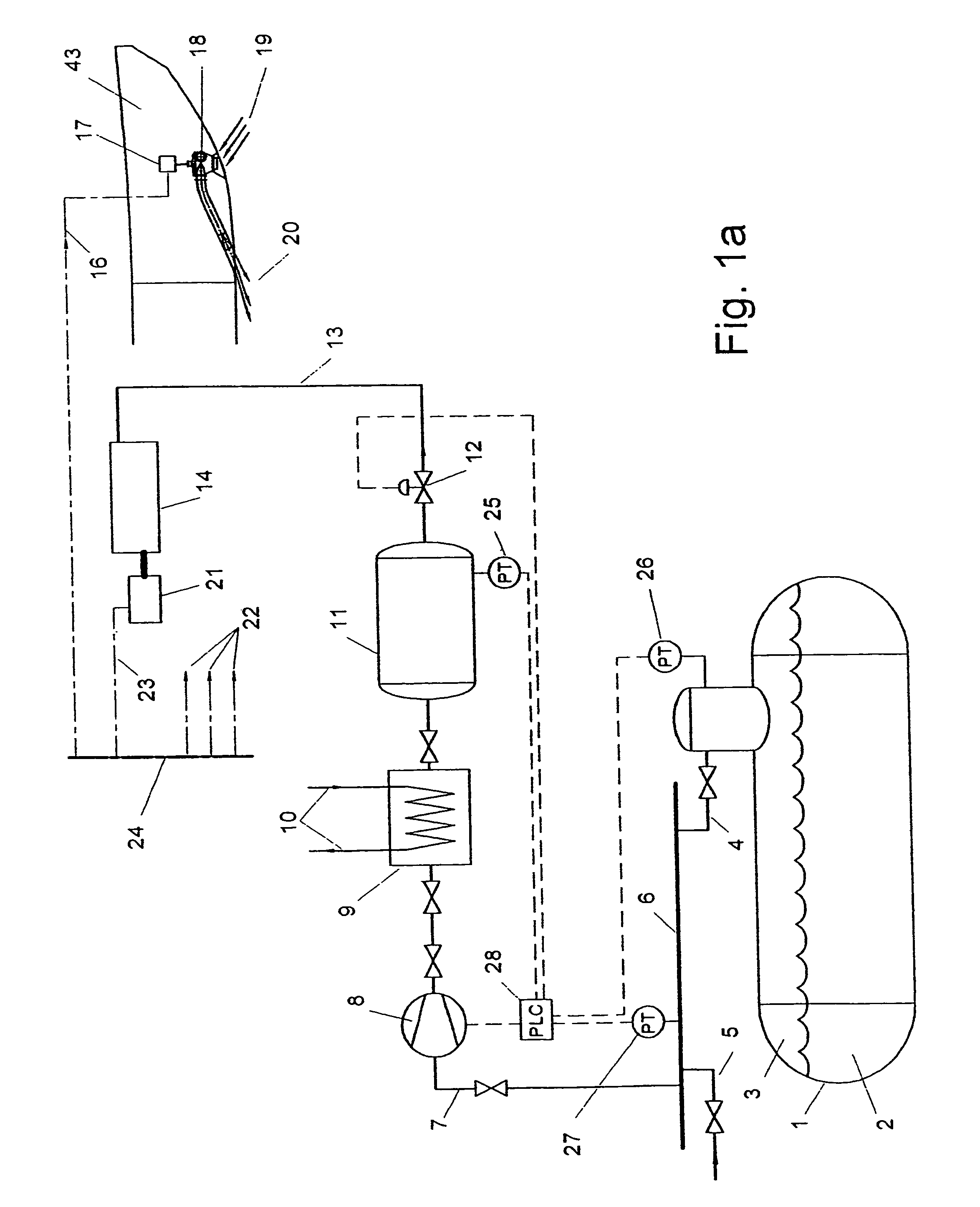System and process for transporting LNG by non-self-propelled marine LNG carrier
a marine liquefied natural gas and carrier technology, applied in the direction of container discharging methods, vessel parts, vessel construction, etc., can solve the problems of insufficient power demand to provide effective severe limitation of the degree of lng tank pressure control available, and standard tunnel thrusters, in which a propeller is used
- Summary
- Abstract
- Description
- Claims
- Application Information
AI Technical Summary
Benefits of technology
Problems solved by technology
Method used
Image
Examples
Embodiment Construction
[0118]The particulars shown herein are by way of example and for purposes of illustrative discussion of the embodiments of the present invention only and are presented in the cause of providing what is believed to be the most useful and readily understood description of the principles and conceptual aspects of the present invention. In this regard, no attempt is made to show structural details of the present invention in more detail than is necessary for the fundamental understanding of the present invention, the description taken with the drawings making apparent to those skilled in the art how the several forms of the present invention may be embodied in practice.
[0119]FIG. 1 shows a first non-limiting arrangement according to the invention. Liquid Natural Gas (LNG) 2 is contained in one or more insulated LNG tank(s) 1. The insulated tanks maybe of the pressure vessel type such as cylindrical or multi-lobe tanks as is common for pressurized liquefied gas carriers or of the non-pre...
PUM
 Login to View More
Login to View More Abstract
Description
Claims
Application Information
 Login to View More
Login to View More - R&D
- Intellectual Property
- Life Sciences
- Materials
- Tech Scout
- Unparalleled Data Quality
- Higher Quality Content
- 60% Fewer Hallucinations
Browse by: Latest US Patents, China's latest patents, Technical Efficacy Thesaurus, Application Domain, Technology Topic, Popular Technical Reports.
© 2025 PatSnap. All rights reserved.Legal|Privacy policy|Modern Slavery Act Transparency Statement|Sitemap|About US| Contact US: help@patsnap.com



